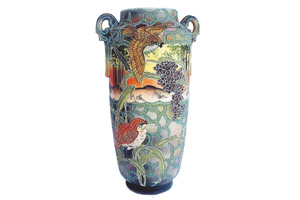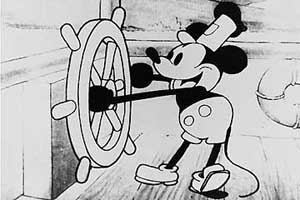Painting, architecture, literature and other expressions of Japanese art and culture, such as the tea ceremony, are the results of a thoughtful mix of the predominant foreign trends in each era (mainly Chinese and Korean) with the ideas and impressions of Japanese artists. They always very creatively adapted external influences to their own aesthetic conceptions.
Fertile Literature
Japanese literary works are varied and extensive, encompassing dramatic, poetic and narrative genres, together with accounts of journeys within Japan, full of introspection and delicate sentimental allusions.
The first known pieces (although written mostly in Chinese, as the Japanese originally used that nation’s characters) are the «Kojiki» and «Nihonshoki» or «Nihon-gi». These are 8th century compilations of legends and historical traditions. The most important piece of this era was the «Manioshu» («Compilation of the 10,000 Sheets»), the oldest poetic anthology ever compiled.
Later, and by then written in Japanese, poetic form was perfected but their classic melancholy was still preserved.
At the same time prose developed which was elegant and refined due to the restriction of reading and writing to the Japanese upper class. The most relevant genres were the nikki or everyday life prose, and the uta monogatari or poetic tales, written almost exclusively by ladies-in-waiting. One of the most famous works of this second group was «Genji Mongatari» (Tale of Prince Genji»), written in the 11th century by Murasaki Shikibu. It is considered by some the greatest achievement of Japanese literature.
Between the 12th and 13th centuries, epic works or gunki monogatari were written, such as the anonymous «Heike Monogatari» («Tales of the Heike»), telling of the struggle between two feudal families. No theatre, created by Buddhist authors, arose based on the idea that actors, with only the beauty of their gestures and words, evoked the transcendent world.
Literature broke into new territory between the 18th and 19th centuries with the appearance of haiku, short poetic compositions with three verses of few syllables, and the kana books, which not only took in fictitious themes, but also essays and historical issues. The most outstanding novelist was Ihara Saikaku, with his work «Koshoku Gonin Onna» («Five Women who Loved Love»).
Finally, in theatre two currents which were more popular than no appeared: joruri, or puppet theatre, and kabuki, made up of songs, dance and theatrical action. Both styles also touched upon everyday themes.
Intimate Painting
Classical Japanese pictorial art was characterised by the representation of nature in a delicate and subdued way in landscape scenes and the creation of intimate feelings using feminine figures in different positions to give a sensation of movement.
Japanese painters used a variety of colours, although their painting was simple. The first Japanese painter is considered to be Kose Kanaoka.
During the 8th century there were strong Chinese, Hindu and Buddhist influences. In the following centuries beauty and refined perfection were emphasised and in the 11th Century the Ryn yamato school was created, which later split into two currents: one Chinese in style, simple and vigorous, and another of Indian origin with a decorative emphasis, both of which dominated in the 13th Century. Carved wood, with painted flowers, dragons and birds appeared at the beginning of the 15th Century.
Ko-Hagen founded the Kano school, which was the most influential over the following three hundred years in Japan, due to its rich colours and bold, strong lines on sliding wood panels. Before Japan’s opening to the exterior and the end of local innovations in painting, the shipo style arose in the 18th Century.
Religious Architecture
Traditional Japanese buildings are noticeably influenced by Shinto and Buddhist aesthetics, as they are integrated into an uninterrupted natural environment, this being part of both beliefs.
A building was not designed without evoking a pond, garden, stones or plum trees, which was reaffirmed with the preference of wood as the basic construction material, although this is also explained by wood’s resistance to the continuous tremors which affect Japan.
In the Heian era the shinden zukuri architectural style was prominent, which used hay roofs supported by wooden beams, as in the case of the Kyoto Imperial Palace.
In the Kamakura period the Chinese Tang style prevailed, which culminated in the construction of temples of several floors, such as the Kinkakuji temple («the Golden Pavillion»). It was in this epoch that sand, stone gardens and small bushes began to be used to complement buildings. These buildings, such as the five floor pagodas in Kyoto, Nikko and Osaka, reached their most elaborate in the 15th Century. In the following century castles appeared.








